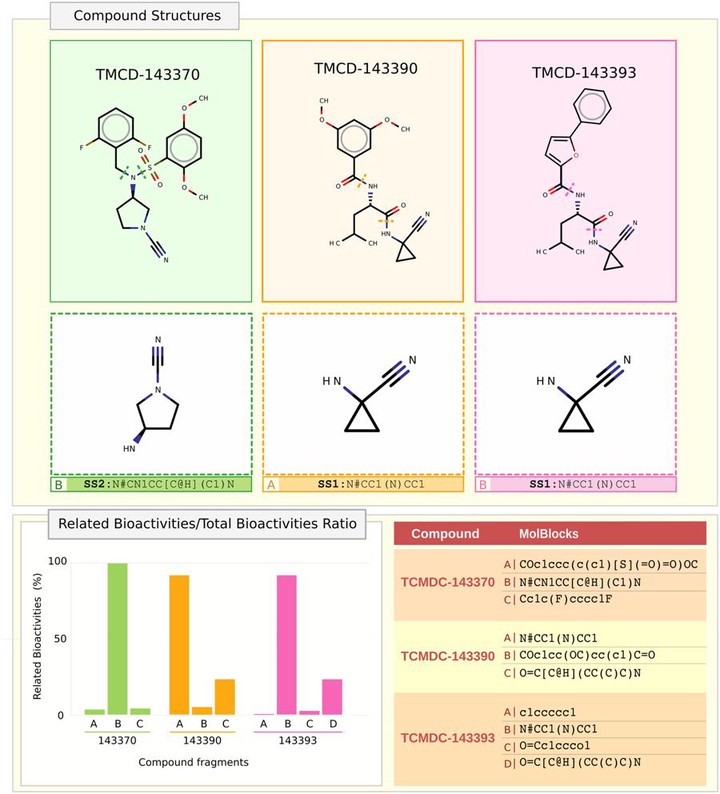Novel scaffolds for inhibition of Cruzipain identified from high-throughput screening of anti-kinetoplastid chemical boxes
 Cheminformatics exploration of substructures from active compounds by @lionel
Cheminformatics exploration of substructures from active compounds by @lionel
Abstract
American Trypanosomiasis or Chagas disease is a prevalent, neglected and serious debilitating illness caused by the kinetoplastid protozoan parasite Trypanosoma cruzi. The current chemotherapy is limited only to nifurtimox and benznidazole, two drugs that have poor efficacy in the chronic phase and are rather toxic. In this scenario, more efficacious and safer drugs, preferentially acting through a different mechanism of action and directed against novel targets, are particularly welcome. Cruzipain, the main papain-like cysteine peptidase of T. cruzi, is an important virulence factor and a chemotherapeutic target with excellent pre-clinical validation evidence. Here, we present the identification of new Cruzipain inhibitory scaffolds within the GlaxoSmithKline HAT (Human African Trypanosomiasis) and Chagas chemical boxes, two collections grouping 404 non-cytotoxic compounds with high antiparasitic potency, drug-likeness, structural diversity and scientific novelty. We have adapted a continuous enzymatic assay to a medium-throughput format and carried out a primary screening of both collections, followed by construction and analysis of dose-response curves of the most promising hits. Using the identified compounds as a starting point a substructure directed search against CHEMBL Database revealed plausible common scaffolds while docking experiments predicted binding poses and specific interactions between Cruzipain and the novel inhibitors.